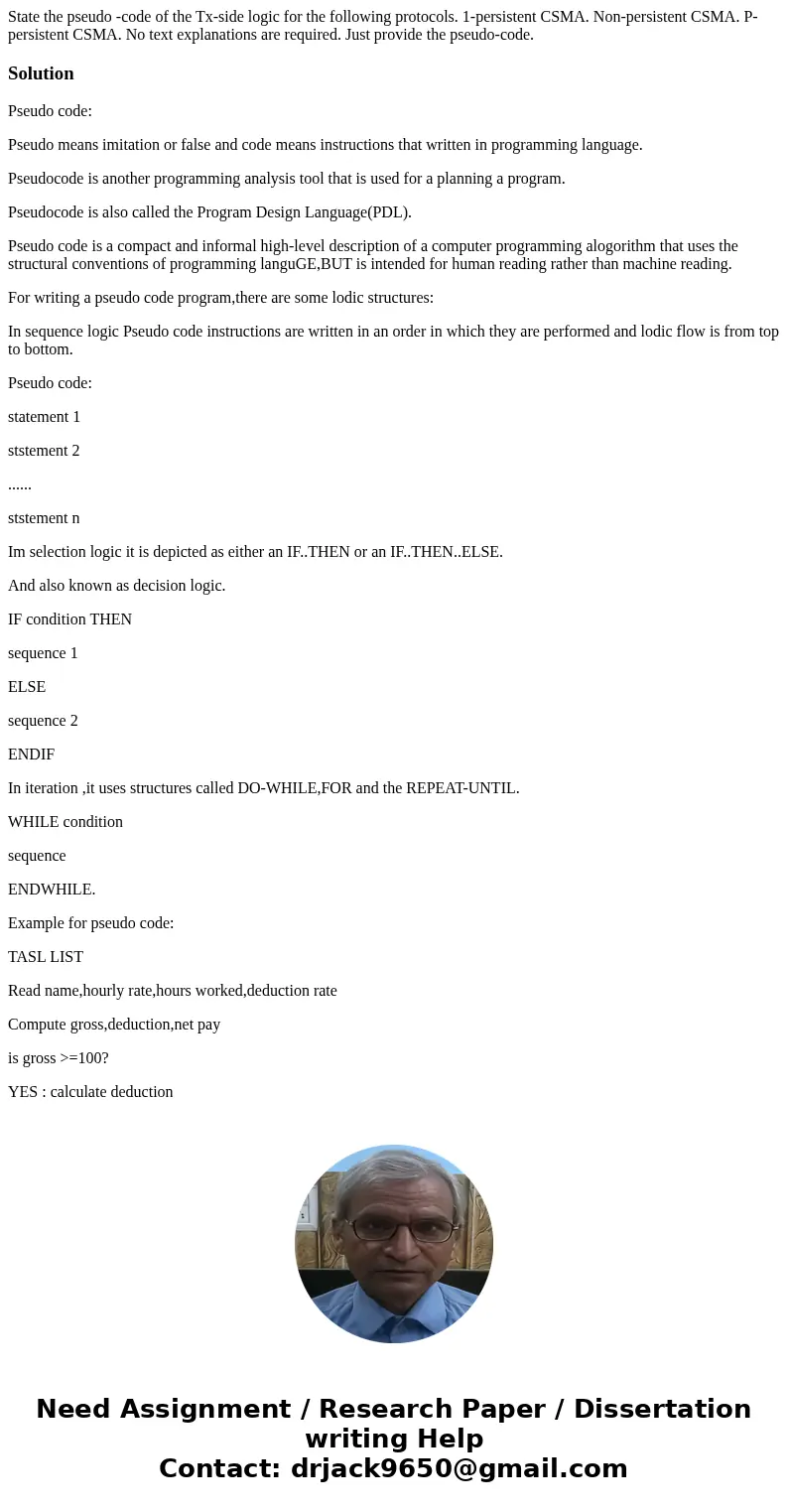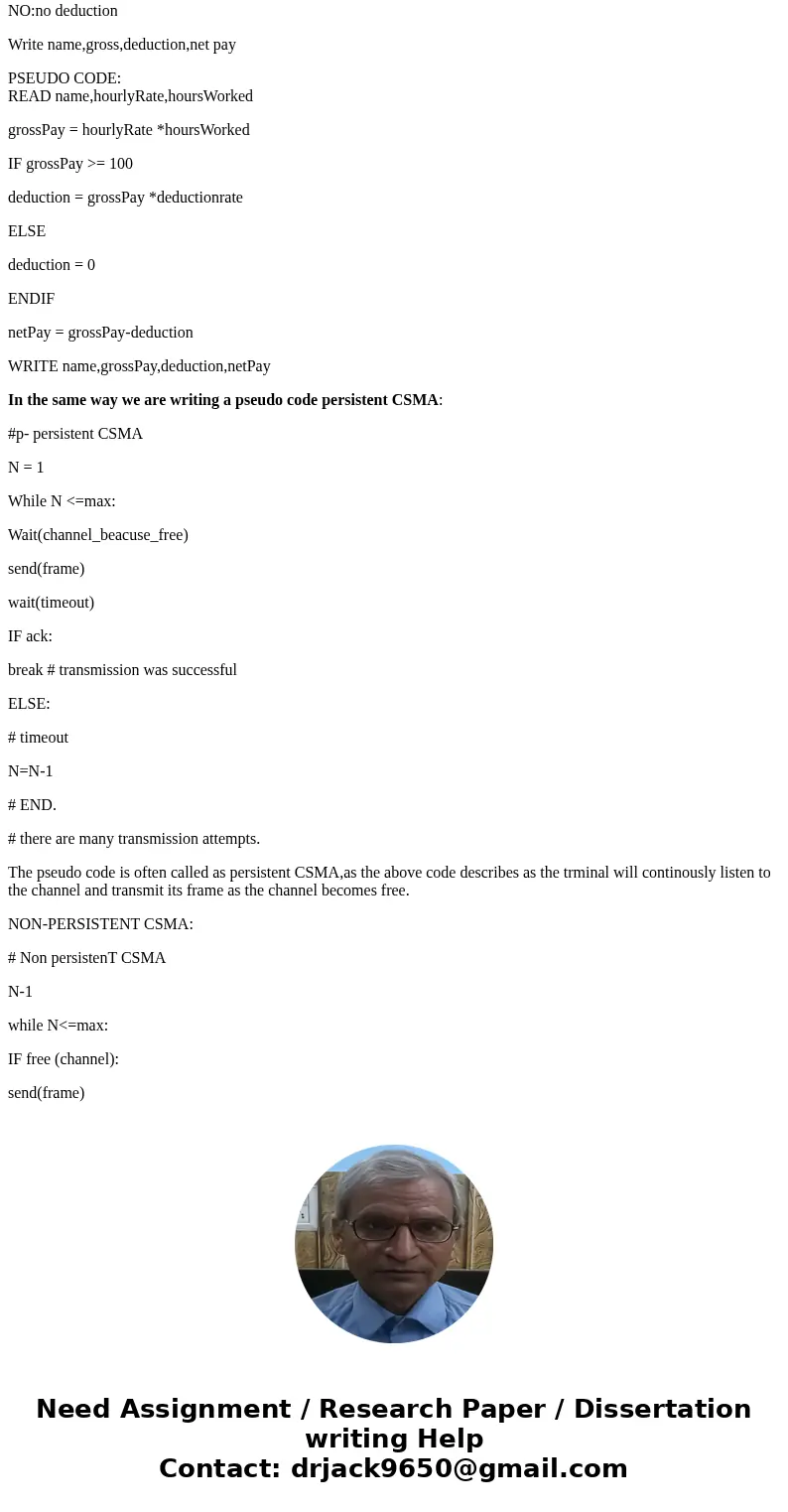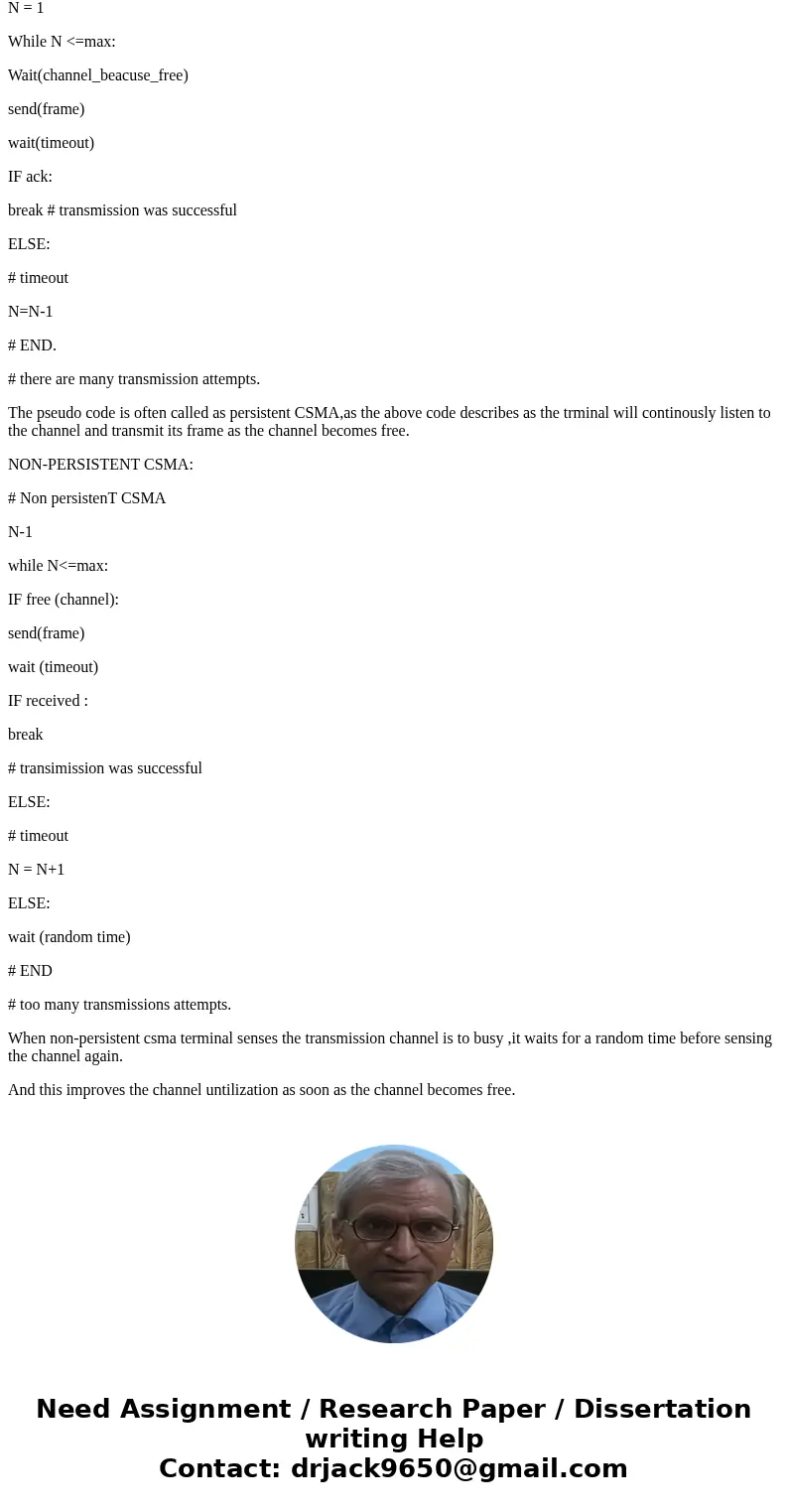State the pseudo code of the Txside logic for the following
Solution
Pseudo code:
Pseudo means imitation or false and code means instructions that written in programming language.
Pseudocode is another programming analysis tool that is used for a planning a program.
Pseudocode is also called the Program Design Language(PDL).
Pseudo code is a compact and informal high-level description of a computer programming alogorithm that uses the structural conventions of programming languGE,BUT is intended for human reading rather than machine reading.
For writing a pseudo code program,there are some lodic structures:
In sequence logic Pseudo code instructions are written in an order in which they are performed and lodic flow is from top to bottom.
Pseudo code:
statement 1
ststement 2
......
ststement n
Im selection logic it is depicted as either an IF..THEN or an IF..THEN..ELSE.
And also known as decision logic.
IF condition THEN
sequence 1
ELSE
sequence 2
ENDIF
In iteration ,it uses structures called DO-WHILE,FOR and the REPEAT-UNTIL.
WHILE condition
sequence
ENDWHILE.
Example for pseudo code:
TASL LIST
Read name,hourly rate,hours worked,deduction rate
Compute gross,deduction,net pay
is gross >=100?
YES : calculate deduction
NO:no deduction
Write name,gross,deduction,net pay
PSEUDO CODE:
READ name,hourlyRate,hoursWorked
grossPay = hourlyRate *hoursWorked
IF grossPay >= 100
deduction = grossPay *deductionrate
ELSE
deduction = 0
ENDIF
netPay = grossPay-deduction
WRITE name,grossPay,deduction,netPay
In the same way we are writing a pseudo code persistent CSMA:
#p- persistent CSMA
N = 1
While N <=max:
Wait(channel_beacuse_free)
send(frame)
wait(timeout)
IF ack:
break # transmission was successful
ELSE:
# timeout
N=N-1
# END.
# there are many transmission attempts.
The pseudo code is often called as persistent CSMA,as the above code describes as the trminal will continously listen to the channel and transmit its frame as the channel becomes free.
NON-PERSISTENT CSMA:
# Non persistenT CSMA
N-1
while N<=max:
IF free (channel):
send(frame)
wait (timeout)
IF received :
break
# transimission was successful
ELSE:
# timeout
N = N+1
ELSE:
wait (random time)
# END
# too many transmissions attempts.
When non-persistent csma terminal senses the transmission channel is to busy ,it waits for a random time before sensing the channel again.
And this improves the channel untilization as soon as the channel becomes free.



 Homework Sourse
Homework Sourse